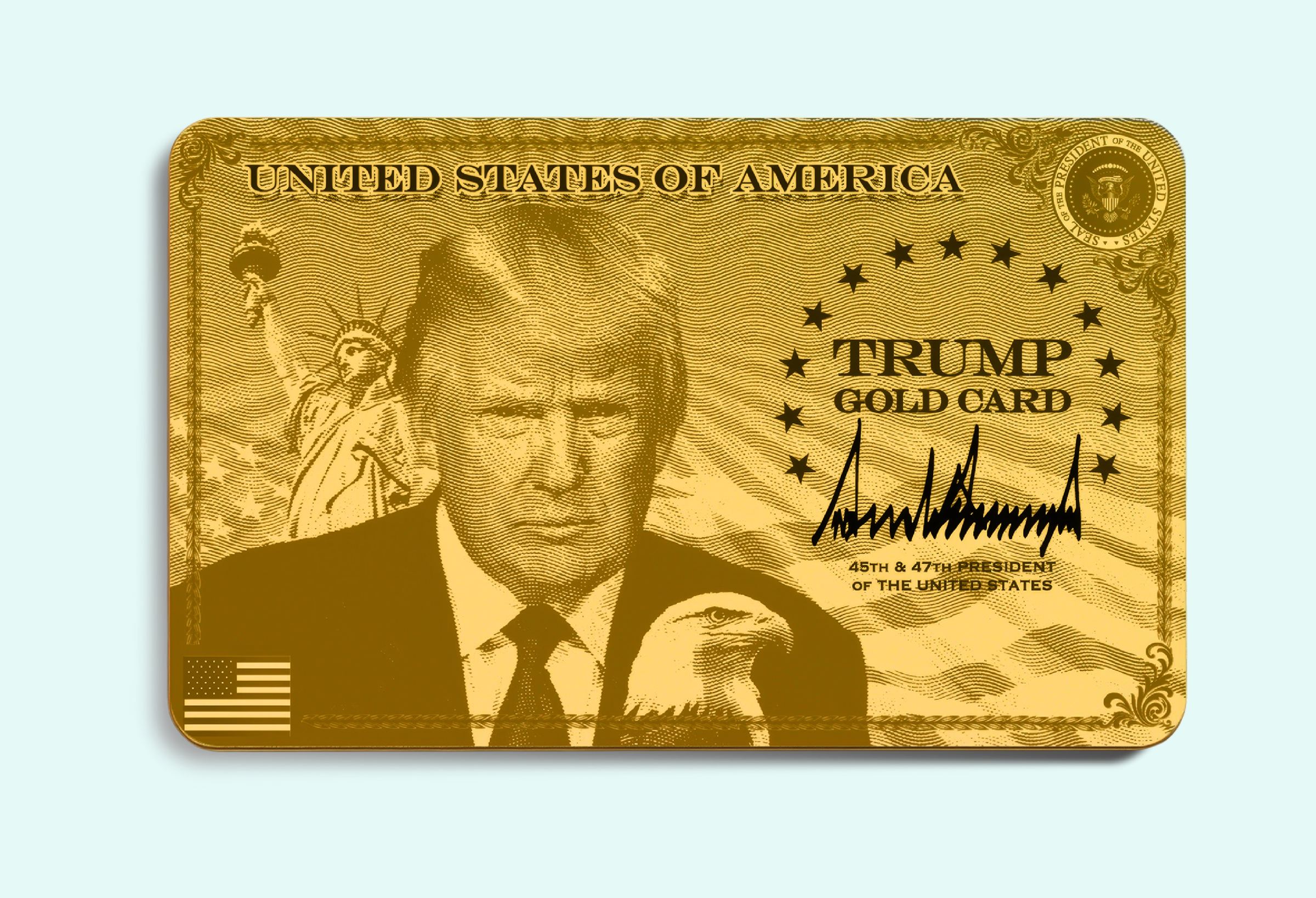In September 2025, President Donald Trump signed an executive order launching the Trump Gold Card—a $1 million pathway to U.S. permanent residency. The policy has drawn attention among immigration attorneys, prompting discussion about its implementation, legality, and potential impact on employment-based immigration programs.
For immigration lawyers, this new policy represents a notable shift toward investment-based immigration—paired with another proposed change: a new $100,000 H-1B fee.
This post draws from the latest Immigration Uncovered episode: Gold Card, H-1B Fee, and Electronic Payments, and breaks down the cost, eligibility requirements, and what lawyers need to know as DHS finalizes implementation.
What is the Trump Gold Card visa?
The Trump Gold Card visa, established by executive order on September 19, 2025, offers a path to U.S. permanent residency—commonly known as a green card—through a substantial financial contribution to the U.S. government.
Unlike traditional visa programs, this initiative repurposes the EB-1 and EB-2 categories, allowing applicants to qualify based on monetary contribution rather than professional achievements.
The administration has not yet published final application procedures, leaving many asking when the Trump Gold Card will be available.
How does the Trump Gold Card visa work?
The Trump Gold Card treats a financial contribution as evidence of extraordinary ability (EB-1A) or national interest (EB-2 NIW). This contribution replaces traditional proof like publications, awards, or professional recognition.
Applicants will reportedly follow these steps:
Submit a $1 million or $2 million contribution to a Department of Commerce fund.
Undergo DHS and USCIS vetting.
Obtain lawful permanent residency upon approval.
Final application details, including payment verification and eligibility criteria, are expected to be outlined in forthcoming federal implementation guidance.
How much does the Trump Gold Card cost?
The contribution amounts vary depending on who applies:
Individual applicants: $1 million contribution
Corporate sponsors: $2 million contribution per employee
These amounts are categorized as “gifts” rather than fees, meaning they may not be refundable and could fall outside traditional fee oversight.
This raises key questions for attorneys advising clients—especially regarding financial transparency and potential exposure to fraud or mismanagement.
Legal and economic questions around the Trump Gold Card
The order modifies how existing EB-1 and EB-2 visa categories may be interpreted, treating a financial “gift” as evidence of extraordinary ability or national interest.
Key issues under discussion include:
Redefinition of “extraordinary ability” through financial contribution rather than merit or skill.
Absence of clearly defined refund mechanisms or oversight for the Department of Commerce fund holding the “gifts.”
Possible impact on existing EB-1 and EB-2 applicants, particularly from high-demand countries such as India and China.
The Trump Gold Card represents a notable policy development that blends immigration with investment strategy, prompting legal experts and practitioners to examine how it fits within the framework of the INA and how forthcoming regulations or court interpretations may shape its implementation.
The $100K H-1B fee: A parallel policy shift
Alongside the Trump Gold Card announcement, President Trump also issued a proclamation proposing a $100,000 H-1B fee for each petition filed by U.S. employers. The stated intent is to prioritize domestic workers and reduce dependency on foreign labor. The proposal has quickly become one of the most closely watched elements of the administration’s immigration policy agenda.
For most employers, the H-1B visa already involves substantial costs—including filing fees, legal expenses, and compliance requirements. Adding a $100,000 charge per filing could present financial challenges for small and mid-sized businesses and may reduce the use of H-1B talent across sectors like tech, healthcare, and engineering.
Immigration attorneys note that this approach could have economic implications by introducing additional barriers for employers who rely on highly skilled international professionals.
This proclamation, paired with the Trump Gold Card, highlights a broader shift toward linking immigration policy with financial criteria. While the Gold Card emphasizes investment contributions to the federal government, the proposed H-1B fee increases the financial obligations for employers sponsoring skilled workers.
Attorneys are closely monitoring DHS and Department of Labor updates for details on what the $100k fee for H-1B covers—including whether it will apply to renewals or amendments—and when the H-1B $100k fee will start, currently projected for enforcement in early 2026. In the meantime, many immigration lawyers are advising employers to plan for potential cost increases, reevaluate their hiring strategies, and watch for agency guidance clarifying compliance obligations.
Impact on immigration practice and employers
Together, the Trump Gold Card and H-1B fee represent a shift in how U.S. immigration policy approaches eligibility and cost structure. This dual policy is already influencing employer strategies and law firm caseloads.
Navigating unclear policy implementation
The Trump Gold Card executive order was announced before any formal rulemaking or published USCIS guidance, leaving gaps in understanding how the policy will function. For immigration attorneys, this means operating in a period of uncertainty where interpretation and enforcement may evolve rapidly.
Without clear adjudicatory standards, lawyers may encounter inconsistent decisions across field offices or visa processing centers. For instance, it remains unclear whether DHS will require standard background checks, source-of-funds verification, or family eligibility documentation similar to EB-5 cases.
Attorneys should prepare clients for shifting timelines, additional evidence requests, and even the possibility of program suspension or modification as litigation unfolds.
Conservative advising remains the safest approach until DHS and USCIS issue formal implementing regulations. Immigration firms should also document every client interaction regarding the Trump Gold Card to demonstrate compliance diligence in the event of reversals or audits.
As other immigration policy changes continue to unfold, it’s worth noting that USCIS is also moving to phase out paper checks for filing fees, signaling a broader modernization effort across agency operations.
Managing client concerns and misinformation
Almost immediately after the Trump Gold Card announcement, misinformation spread online—most notably claims that it allows individuals to “buy U.S. citizenship.” This has led to a surge in client inquiries, especially from foreign nationals seeking expedited residency.
Immigration lawyers play a critical role in clarifying these misunderstandings. It’s important to emphasize that the Trump Gold Card, as outlined, offers a path to permanent residency, not citizenship. Applicants must still undergo the naturalization process like any other green card holder.
To manage client expectations and ease concerns, firms can:
Send periodic email updates or newsletters summarizing verified information from DHS, USCIS, or the Federal Register.
Use secure client portals, like 8am™DocketWise to share FAQs or clarifications tailored to specific visa types.
Train intake staff to identify and educate clients influenced by misleading media or unofficial sources.
This proactive approach not only protects clients from predatory schemes but also builds trust—reinforcing the attorney’s role as a reliable authority amid fast-moving immigration policy from the Trump administration.
Balancing compliance risk and business pressure
As high-net-worth individuals and corporations express interest in the Trump Gold Card, attorneys may face mounting pressure to act quickly—especially from business clients eager to sponsor employees or investors before potential program limits are imposed.
However, without finalized implementation rules from DHS and the Department of Commerce, even preliminary applications could expose clients to unnecessary legal and financial risk. The “gift” classification of the contribution, for instance, raises questions about refundability, tax implications, and compliance with existing foreign investment laws.
Many attorneys recommend waiting until clear procedures, forms, and agency guidance are published in the Federal Register. In the meantime, firms can:
Develop internal compliance checklists based on EB-1A and EB-2 NIW frameworks.
Maintain documentation demonstrating informed consent and acknowledgment of uncertainty.
Monitor the Federal Register and official USCIS channels for any updates on when the Trump Gold Card will be available.
Balancing business urgency with regulatory caution is difficult, but it’s also what sets trusted immigration counsel apart. By grounding advice in legal precedent and transparent communication, firms can help clients pursue opportunities responsibly while safeguarding against future enforcement risks.
What comes next for U.S. immigration policy
The Trump Gold Card visa and the $100K H-1B fee signal a move toward integrating economic considerations into U.S. immigration policy.
For immigration attorneys, adaptability is key. As these policies evolve, firms will need to stay informed, transparent, and client-focused. Firms using immigration-specific case management solutions like DocketWise can track these updates efficiently and ensure accurate client communication. Book a demo today.
To dive deeper, listen to the full Immigration Uncovered episode on the Trump Gold Card, H-1B Fee, and Electronic Payments.
About the author

M.E. Hammond
